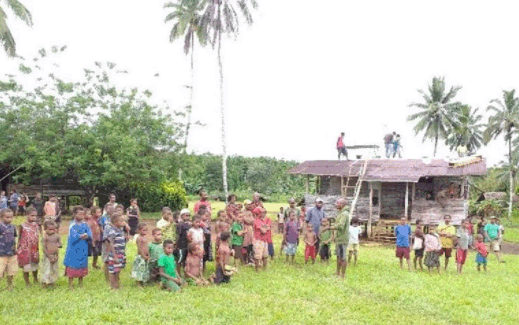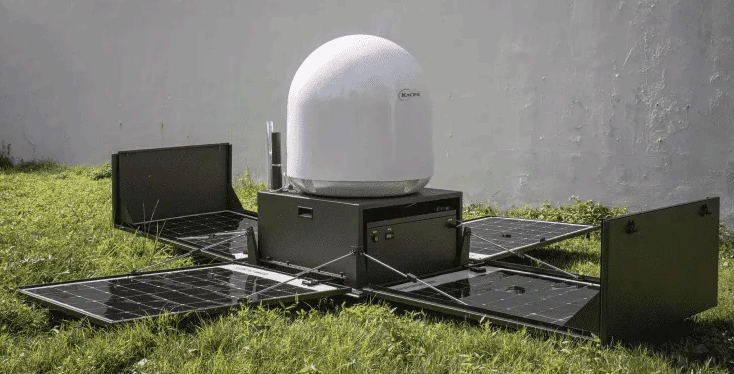Kacific: A Unique Business Model that Combines Commercial Success with Meeting Sustainable Development Goals
by Virgil Labrador, Editor-in-Chief
Since the first commercial satellites were launched nearly sixty years ago, the potential for connecting the world’s population, especially those in remote, inaccessible areas, has always been touted as one of the key benefits of satellite technology. With the growth of the internet and the development of satellites that can deliver highly reliable broadband services, it is widely recognized that satellites can play a key role in bridging the digital divide and making a substantial impact on meeting social development goals.
The influx of new satellites and other technologies, however, has not yet substantially accelerated the process of bridging the digital divide. In November 2021, the International Telecommunications Union released a report that revealed that an estimated 37 per cent of the world's population–or 2.9 billion people–still have never accessed the Internet, 97% of which are in developing countries.
| "...Kacific’s mission is to improve livelihoods and create opportunities for unserved populations in rural areas and local communities including small businesses, schools, medical facilities, governments and other segments by providing high-quality, affordable, and accessible broadband..." |
Christian Patouraux, Founder and CEO of Kacific |
Singapore-based Kacific Broadband Satellites has built its business with the goal of connecting the unconnected. “Kacific’s mission is to improve livelihoods and create opportunities for unserved populations in rural areas and local communities including small businesses, schools, medical facilities, governments and other segments by providing high-quality, affordable, and accessible broadband,” said Christian Patouraux, Founder and CEO of Kacific.
Christian is very familiar with the challenges of bringing broadband services to unconnected communities. Before starting Kacific, he was a senior executive at a global satellite operator which was planning a non-Geostationary Orbit (NGSO) constellation to promote broadband access to underserved communities. He then became an independent consultant and did a number of consulting projects and market studies mainly for entities planning to launch broadband satellites. He increasingly became frustrated by the lack of focus on providing viable connectivity solutions to remote areas in the Pacific islands and rural Asia, which was lacking due to commercial viability. He decided, with some help from a few friends, to start a broadband satellite venture that he initially termed “YouTube for Islanders.” From those humble beginnings in 2013, came Kacific Broadband Satellites, which launched its first all Ka-Band high throughput satellite in 2019. Kacific has achieved many key milestones since, including realizing positive Earnings Before Taxes, Depreciation and Amortization (EBITDA) in April 2021, and continues to grow rapidly with projected revenue growth of 130% in 2022 and 36% percent in 2023.
What is amazing about Kacific reaching profitability in a relatively short time, is that it was able to achieve this while making a substantial impact on the lives of the people and communities that it serves. Kacific’s business model aims not just to achieve profitability and a reasonable return on its investment for its various stakeholders, but also to achieve Environmental and Social Goals (ESG) in line with sustainable development goals set by the United Nations. By bringing broadband access to remote communities, the impact is beyond simply accessing the Internet - the business model empowers more and more people through supporting local businesses and contributing to job creation; promoting gender equality through connecting schools by making education even more accessible; improving quality of life by connecting health facilities and bringing health care to local clinics in isolated communities, among others.
By disrupting down the value chain, the affordability, accessibility of the Internet services and equipment provided by Kacific has enabled them to penetrate even the most economically challenged areas. This effectively was able to surmount one of the key obstacles to broadband penetration in developing countries--the relatively low ARPUs (Average Revenue Per users). Today, Kacific exceeds affordability targets set by the ITU and UNESCO for 1GB of bandwidth at lower than 2% of Gross National Income (GNI) per capita in countries such as Indonesia, the Philippines, Papua New Guineas and Vanuatu, among others.
“We were able to make our services affordable by our innovative wholesale bandwidth and retail packaged bandwidth services. We provide packages to better serve the needs of our customers and end-users, building an ecosystem for either multi-year wholesale or packaged retail products,” said Christian Patouraux. “For wholesale bandwidth, one thing that differentiates us is that we invested in our own hub, teleports, and run a Network Operating Center to manage our performance 24/7 down to the site level. We manage the satellite ecosystem for both wholesale and retail customers and our Network Operations Center (NOC) also does customer support for any incidents. We also train the Internet Service Providers (ISPs) and telcos on how to create and shape their own products to sell to the customers, and we made terminals low cost but able to support high speeds of up to 85Mbps,” he added.
 |
| Villagers welcomed the installation of a Kacific earth station and solar equipment at the Honinabi Aid Post in Papua New Guinea. |
Kacific1 satellite is making a major impact on the communities in its coverage area in Asia and the Pacific islands where more than 127 million still remain unconnected. The COVID-19 pandemic highlighted the importance of providing communities with reliable access to the internet as the demand for critical government information and services, such as healthcare and education, increased. Kacific responded by rapidly introducing new products and services, such as GigWiFi and Community WiFi to shape and deliver appropriate and affordable bandwidth plans to thousands of remote communities affected by the pandemic.
One of the beneficiaries of these programs is health care institutions in remote areas of Papua New Guinea (PNG). Kacific is working with
PNG’s Sustainable Development Program Limited (SDP) to install and operate satellite dishes at 30 healthcare institutions located in remote areas of PNG’s Western Province. The introduction of Telemedicine services to these remote communities has made a difference between life and death in many cases. Health workers at the Arufi Aid Post benefit from using satellite internet to make calls when seeking emergency medical advice from available on-call doctors. Life-saving medical evacuations are also now easily coordinated with Mission Aviation Fellowship (MAF) flights via mobile phones.
 |
| Kacific's CommsBox terminal |
Another Kacific product that’s making an impact is CommsBox-- an emergency communication terminal that can be instantly activated in remote areas to establish satellite connectivity. CommsBox can be stored at remote communities or even airdropped into the emergency zones. CommsBox has been proven useful in areas where communications are cut off during natural disasters such as frequent typhoons in countries like the Philippines, among others.
With the financial and social development success of Kacific’s first satellite serving Asia and the Pacific, the company is now ready to bring its successful business model to other parts of the developing world to meet the growing demand from the markets served. The next step is the launch of their second satellite, Kacific2, scheduled for a launch by 2025 to cover continental Asia, specifically the developing countries of South Asia such as Pakistan, India, Bangladesh and Nepal and potentially Central Asia (the so-called “stan” countries). The Ka-band satellite will incorporate the latest technologies such as software-defined features that provide maximum flexibility in operation. The satellite will have high spectral efficiency (frequency reuse) and targeted coverage – allowing beams to be directed on-demand to areas that require higher capacity. Phased array antennas will be used to enable beams to shift location and size in a matter of seconds, which allows the satellite to make changes in coverage as dictated by markets demands. This flexibility limits the business risks on the satellite as they can adjust to changing market conditions.
There is an estimated underserved market of over one billion people in the planned coverage area of Kacific2. The company projects that the addition of Kacific2 will open up a Serviceable Addressable Market (SAM) of around US$ 8 Billion. That’s another one billion people that potentially can benefit socially and economically from broadband access through future Kacific satellites as millions have already in Kacific’s current coverage area in Southeast Asia and the Pacific Islands.
Kacific has proven that commercial success can be achieved in bridging the digital divide and promoting social development goals in underserved markets. It is a sustainable model that can be replicated in other developing regions of the world where there is a large market for broadband services. With its unique business model and a large addressable market, investors can be assured of a lucrative return on their investment as well as contributing to the achievement of social development goals in communities that need it most.
 Virgil Labrador is the Editor-in-Chief of Los Angeles, California-based Satellite Markets and Research which publishes a web portal on the satellite industry www.satellitemarkets.com, the monthly Satellite Executive Briefing magazine and occasional industry reports called MarketBriefs. Virgil is one of the few trade journalists who has a proven track record working in the commercial satellite industry. He worked as a senior executive for a teleport in Singapore, the Asia Broadcast Center, then-owned by the US broadcasting company CBS. He has co-authored two books on the history of satellite communications and satellite technology. He holds a Master’s in Communications Management from the University of Southern California (USC). He can be reached at virgil@satellitemarkets.com
Virgil Labrador is the Editor-in-Chief of Los Angeles, California-based Satellite Markets and Research which publishes a web portal on the satellite industry www.satellitemarkets.com, the monthly Satellite Executive Briefing magazine and occasional industry reports called MarketBriefs. Virgil is one of the few trade journalists who has a proven track record working in the commercial satellite industry. He worked as a senior executive for a teleport in Singapore, the Asia Broadcast Center, then-owned by the US broadcasting company CBS. He has co-authored two books on the history of satellite communications and satellite technology. He holds a Master’s in Communications Management from the University of Southern California (USC). He can be reached at virgil@satellitemarkets.com





